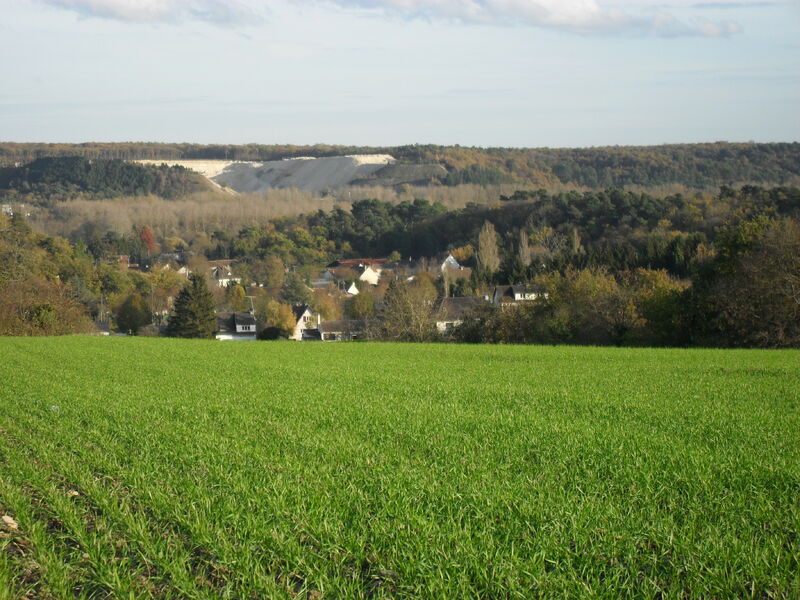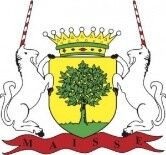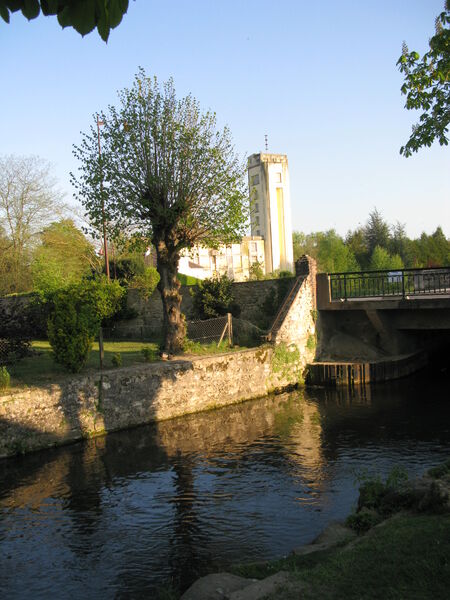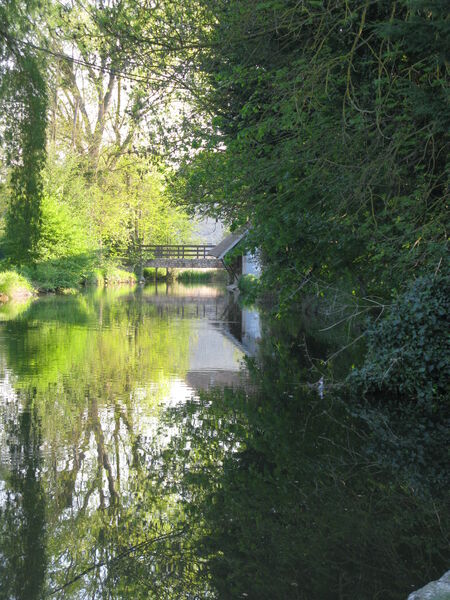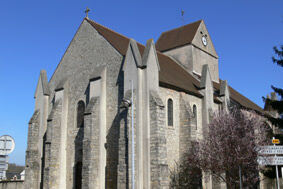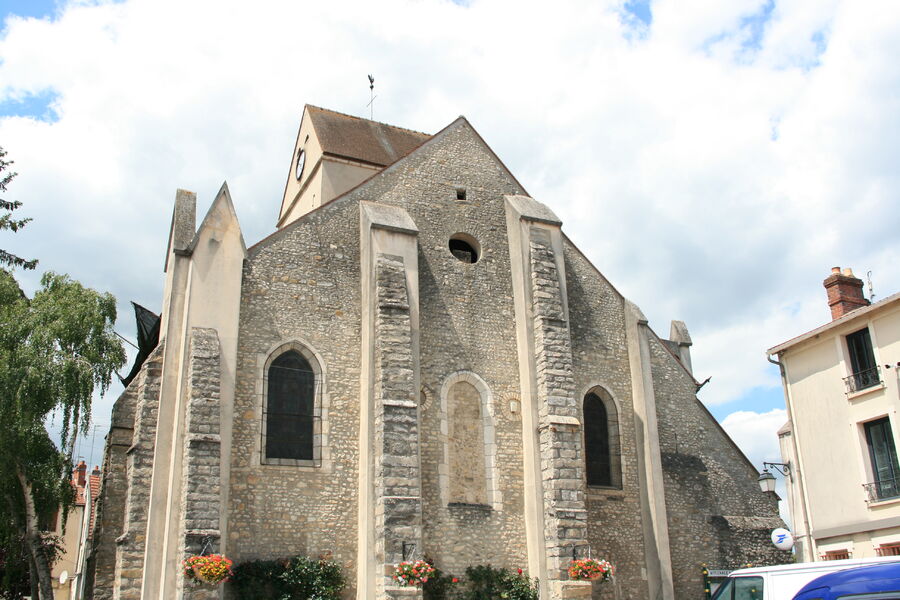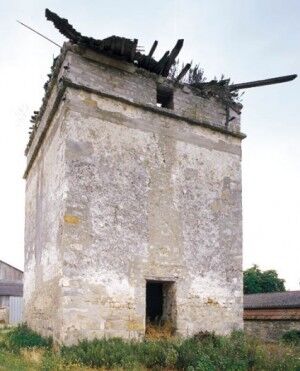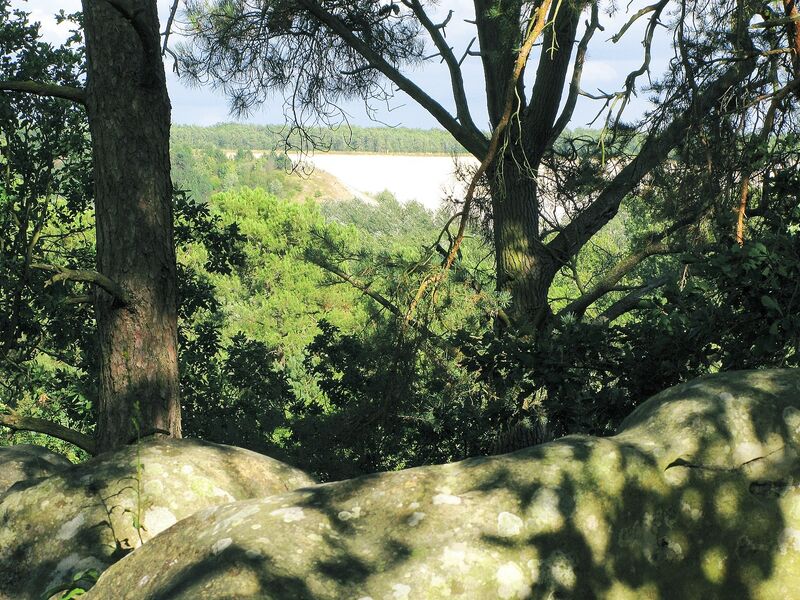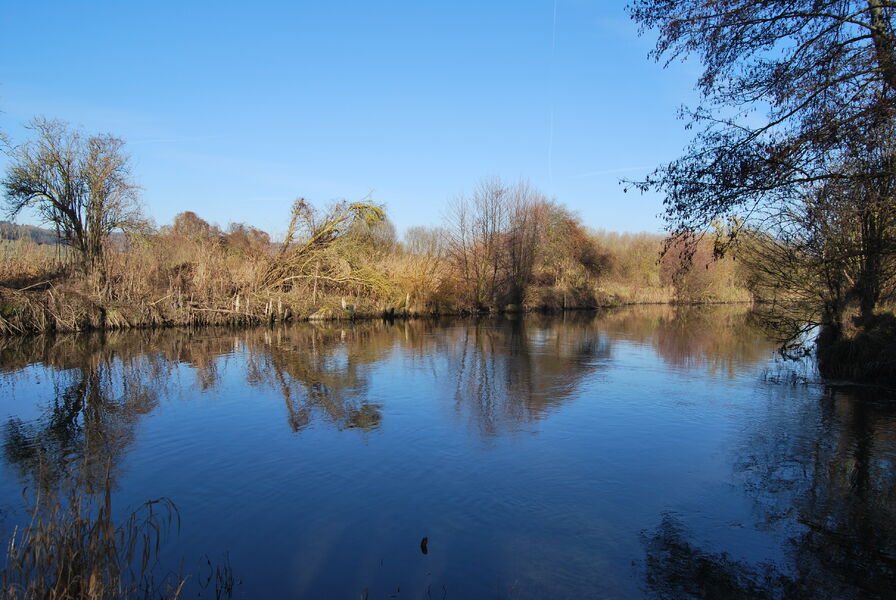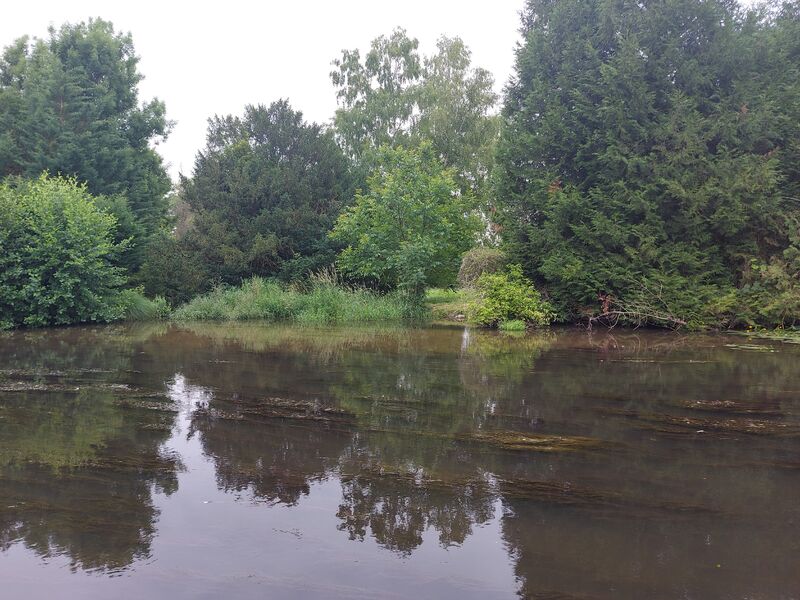Maisse
Maisse
Patrimoine culturel
Maisse is a picturesque village crossed by the Essonne River which is divided in two arms. Thanks to the valley, the village has different kinds of swampy, sandy and aquifer landscapes. They are mostly wooded and with a rich biodiversity. They are even classified as part of the Espaces Naturels Sensibles.
-------------
HISTORY
The name of Maisse could come from the Gallic name of Massios or from the Latine word of Mansus which means “home”.
However, some traces of human presence in Maisse have been traced back to the Neolithic era as some caves full of engraving were found.
Not only several Gallic graves were found in Maisse, but also some pottery from the Antiquity era. It is not astonishing as the village was located just near a Roman road at the time called “le chemin de Grimery”.
During the Merovingian era, it is confirmed that the village of Maisse was attacked by Normans during an invasion.
Then, during the Middle Age, the village thankfully did not suffer any damages despite numerous wars or feudal struggles because it was attached to the royal estate. However, the village was divided into two parishes : Saint-Médard and Notre-Dame and also a laic community was leaving outside the village. During the 15th century, the village got approval by the King of France to organize a weekly market and two fairs each year.
During the 16th century, the monks who were handling the village gave it to the Hurault family who were close to the Protestants. The daughter of the chancellor Michel de l’Hospital married a man from this family. As a consequence, the village has been the target of several attacks from the Catholics who burnt several farms during the war between those two religions.
In the middle of la Fronde (French civil war) in 1652, Maisse was a stage for the Prince de Condé and his army when he tried to reach Etampes and fight against the royal army.
During the French Revolution, the village was reunified with the two parishes becoming only one.
As of the 19th century, the village experienced a big development for different reasons : the creation of a railway line to Paris, its proximity to the capital city and also the sandstone quarries all around which were hiring a lot of people.
Maisse was occupied during World War II. A document from the archives has been written at the time by the mayor and is very complete, explaining with details the life in Maisse when it got occupied and then when it was freed in August 1944. The Royal Air Force attacked a train and a tank belonging to the Germans at the train station. As a result, Germans destroyed bridges and the blasts damaged numerous houses. Several inhabitants of Maisse were taking part in the Resistance, especially Jacques Oudin who was the son of the mayor.
-------------
HERITAGE
The Church of Saint-Médard
The church was built during the 12th century. The bell tower is the oldest part of the church we can see nowadays. It changed a lot throughout centuries, especially during the 15th century where the whole church was overhauled. It is a Roman style church with very nice arches from the 15th century.
Its furniture is mostly from the 19th century. The outside of the church was damaged during World War II so it has been quickly restored with cement which gives it an original look mixing cement and stones.
An epitaph from Etienne Ingrain, a miller from the 16th century, and a law relief are classified as part of the Monuments Historiques. The church has also been classified since 1926.
++++
The Trough
Maisse, like many other villages all around, still has a trough dating from the period when running water was not present in the region. It was used mostly by inhabitants to let their farm animals drink.
++++
The Wash-House
During the 19th century, a lot of wash-houses were built. Nowadays, you can still see one which is located near the old trough.
++++
The Bois du Patouillat (forest)
Le Patouillat is a small wood located near Maisse. A lot of sandstone blocks can be found inside the forest. Many climbers with different levels are attracted by those blocks. Furthermore, some rocks in the forest have traces of carving from Prehistory.
++++
The Bois de Malabri (forest)
The bois de Malabri is a forest located on the East of Maisse. It is also close to Milly-la-Forêt and perfect for hikers as a lot of paths are possible to walk. Some sandstone rocks are in the forest and also the Camp Romain which are sand dunes. Million of years ago, the Parisian Basin was a sea, then it disappeared, leaving behind it those special soils with sand.
++++
The Cave du Bois de Saint Eloy
This cave is hidden in the forest and it possesses many engraving on its walls from the Prehistoric era. Around Maisse, a lot of traces were found related to this period : shelters, engraving, painting, burials sites,...
++++
The Mills
Maisse, like most villages along the Essonne River, had several mills throughout the years. Some are still standing, with a very old history, and some other changed a lot through time :
The Moulin de Saint-Eloi is extremely old as it was built during the 12th century. It can be confirmed by royal documents relating letter exchanges between King Louis VII and the lord of Maisse. It was restored and modified several times.
The Moulin Brisé was destroyed during the 18th century, but some traces of its presence can still be seen on the wall of the building it was stuck to.
The Moulin Neuf gave its name to the locality where it is situated. It may have existed since the 15th century. Its name could come from the fact it was destroyed and then built again many years after the other mills of the village (“neuf” in French can mean “new”). It was only used for the flour’s production. It was also notified that in 1800 this mill was the most effective hydraulic plant of the village.
The Moulin de la Ville is located in the village center. It was used for cereal production until the 20th century.
++++
The Watercress du Moulin Neuf
Watercress used to be produced a lot along the Essonne River, it was a flourishing activity for years. A watercress’ production was installed in the locality of Moulin Neuf in Maisse. Nowadays, the ruins of this production are used for research and experiments by scientists for biotope’s tracking.
++++
SOURCE: Mairie de Maisse, Corpus Étampois, t4t35.fr, Savoirs Essonne, La Radio de l’Est Parisien, Les Amis de Milly-en-Gâtinais et Environs, Parc Naturel Régional du Gâtinais Français
HISTORY
The name of Maisse could come from the Gallic name of Massios or from the Latine word of Mansus which means “home”.
However, some traces of human presence in Maisse have been traced back to the Neolithic era as some caves full of engraving were found.
Not only several Gallic graves were found in Maisse, but also some pottery from the Antiquity era. It is not astonishing as the village was located just near a Roman road at the time called “le chemin de Grimery”.
During the Merovingian era, it is confirmed that the village of Maisse was attacked by Normans during an invasion.
Then, during the Middle Age, the village thankfully did not suffer any damages despite numerous wars or feudal struggles because it was attached to the royal estate. However, the village was divided into two parishes : Saint-Médard and Notre-Dame and also a laic community was leaving outside the village. During the 15th century, the village got approval by the King of France to organize a weekly market and two fairs each year.
During the 16th century, the monks who were handling the village gave it to the Hurault family who were close to the Protestants. The daughter of the chancellor Michel de l’Hospital married a man from this family. As a consequence, the village has been the target of several attacks from the Catholics who burnt several farms during the war between those two religions.
In the middle of la Fronde (French civil war) in 1652, Maisse was a stage for the Prince de Condé and his army when he tried to reach Etampes and fight against the royal army.
During the French Revolution, the village was reunified with the two parishes becoming only one.
As of the 19th century, the village experienced a big development for different reasons : the creation of a railway line to Paris, its proximity to the capital city and also the sandstone quarries all around which were hiring a lot of people.
Maisse was occupied during World War II. A document from the archives has been written at the time by the mayor and is very complete, explaining with details the life in Maisse when it got occupied and then when it was freed in August 1944. The Royal Air Force attacked a train and a tank belonging to the Germans at the train station. As a result, Germans destroyed bridges and the blasts damaged numerous houses. Several inhabitants of Maisse were taking part in the Resistance, especially Jacques Oudin who was the son of the mayor.
-------------
HERITAGE
The Church of Saint-Médard
The church was built during the 12th century. The bell tower is the oldest part of the church we can see nowadays. It changed a lot throughout centuries, especially during the 15th century where the whole church was overhauled. It is a Roman style church with very nice arches from the 15th century.
Its furniture is mostly from the 19th century. The outside of the church was damaged during World War II so it has been quickly restored with cement which gives it an original look mixing cement and stones.
An epitaph from Etienne Ingrain, a miller from the 16th century, and a law relief are classified as part of the Monuments Historiques. The church has also been classified since 1926.
++++
The Trough
Maisse, like many other villages all around, still has a trough dating from the period when running water was not present in the region. It was used mostly by inhabitants to let their farm animals drink.
++++
The Wash-House
During the 19th century, a lot of wash-houses were built. Nowadays, you can still see one which is located near the old trough.
++++
The Bois du Patouillat (forest)
Le Patouillat is a small wood located near Maisse. A lot of sandstone blocks can be found inside the forest. Many climbers with different levels are attracted by those blocks. Furthermore, some rocks in the forest have traces of carving from Prehistory.
++++
The Bois de Malabri (forest)
The bois de Malabri is a forest located on the East of Maisse. It is also close to Milly-la-Forêt and perfect for hikers as a lot of paths are possible to walk. Some sandstone rocks are in the forest and also the Camp Romain which are sand dunes. Million of years ago, the Parisian Basin was a sea, then it disappeared, leaving behind it those special soils with sand.
++++
The Cave du Bois de Saint Eloy
This cave is hidden in the forest and it possesses many engraving on its walls from the Prehistoric era. Around Maisse, a lot of traces were found related to this period : shelters, engraving, painting, burials sites,...
++++
The Mills
Maisse, like most villages along the Essonne River, had several mills throughout the years. Some are still standing, with a very old history, and some other changed a lot through time :
The Moulin de Saint-Eloi is extremely old as it was built during the 12th century. It can be confirmed by royal documents relating letter exchanges between King Louis VII and the lord of Maisse. It was restored and modified several times.
The Moulin Brisé was destroyed during the 18th century, but some traces of its presence can still be seen on the wall of the building it was stuck to.
The Moulin Neuf gave its name to the locality where it is situated. It may have existed since the 15th century. Its name could come from the fact it was destroyed and then built again many years after the other mills of the village (“neuf” in French can mean “new”). It was only used for the flour’s production. It was also notified that in 1800 this mill was the most effective hydraulic plant of the village.
The Moulin de la Ville is located in the village center. It was used for cereal production until the 20th century.
++++
The Watercress du Moulin Neuf
Watercress used to be produced a lot along the Essonne River, it was a flourishing activity for years. A watercress’ production was installed in the locality of Moulin Neuf in Maisse. Nowadays, the ruins of this production are used for research and experiments by scientists for biotope’s tracking.
++++
SOURCE: Mairie de Maisse, Corpus Étampois, t4t35.fr, Savoirs Essonne, La Radio de l’Est Parisien, Les Amis de Milly-en-Gâtinais et Environs, Parc Naturel Régional du Gâtinais Français
Prestations, conforts et services
- French


